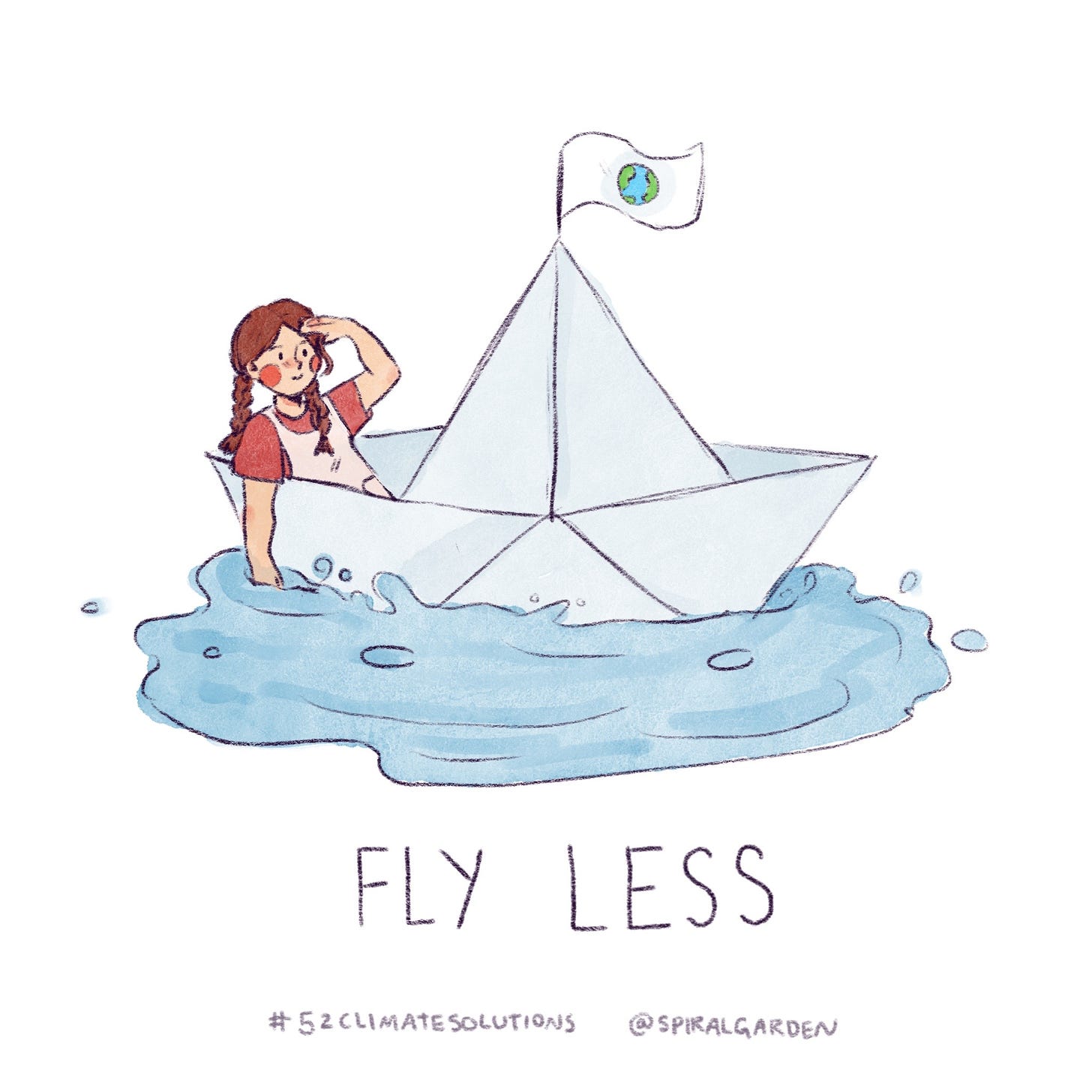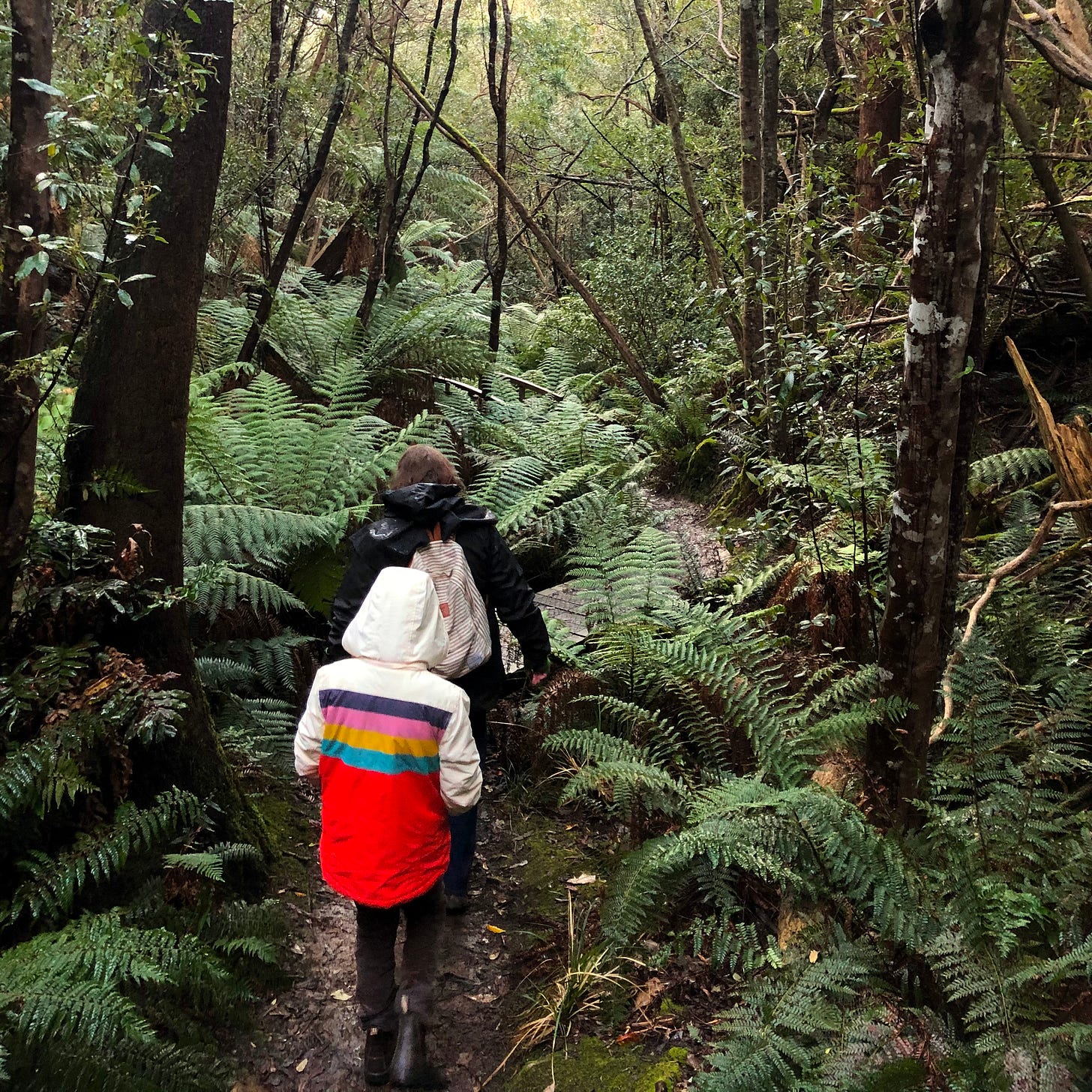19. Fly Less
It's not an easy one right now, but for this week’s #52climatesolutions, we ask you to consider flying less.
Once upon a time, flying in planes was reserved for the very rich and famous. Now, flying is so affordable and boringly normal, we had 61 million domestic passengers fly in Australia in 2019. Of course, 2020 saw a sudden decline in this behaviour (although empty planes still travelled the skies), but now that travel bans and Covid lockdowns are lifted, we’re getting back to business as usual. But this comes at a cost.
Aviation contributes 2-3% of global greenhouse gas emissions (this is increasing, as passenger numbers are projected to double over the next 20 years). This may seem a small percentage, but it’s particularly impressive when you consider 95% of the world’s population has never stepped on a plane. That percentage is increasing, but it’s still a huge indicator of privilege. Although it is a smallish percentage of all greenhouse gas emissions, we think it is low-hanging fruit as far as our individual capacity to act on climate.
“The greatest threat to our planet is the belief that someone else will save it.” - Robert Swan
We could wait for planes to be fuelled by clean energy. But we’re not there yet. The changes to aviation technology are not happening fast enough for our needs. So, part of the challenge in reducing flights lies in shifting cultural norms around flying. Let’s rethink what constitutes the ‘need’ to fly and show that many needs can be met without flying at all. Some work places, academic institutions and climate activists have committed to avoiding flying. Sweden even have a term ‘Flygskam’ - a movement encouraging reflection on the impact flying has on climate change.
With instant access to information about other beautiful places in the world, the lure to travel is strong. But, continuing to fly at current rates will accelerate climate change and degrade places that so many have sought to travel to. Flying less is a big challenge in Australia, because we're ‘girt by sea’ (sea travel is slow or expensive) and the distances between cities are vast. Our public transport systems are often inadequate. People often fly to connect with loved ones, and this social dimension can be difficult to reconcile when it comes to reducing our carbon footprint. There will be times when flying for this reason is a necessity.
For this week’s #52climatesolutions, we ask you to consider flying less. We know at this point in this particular decade, you’re probably itching to go somewhere exotic, but if you can, try to holiday locally. Explore wild places near where you are. Embrace slow travel. Consider travel by land or even sea. Take video calls for interstate or overseas work meetings you might otherwise travel for. Treat flying as something you do out of need rather than ‘just because you can’.
If you do fly, travel economy class, as business class emissions are 3 times higher (and first class is 4 times higher), than economy. And if you’re on the Celebrity Jets list (we see you Taylor), maybe think about whether that flight, spare plane or plane flying without passengers is really essential - perhaps there’s a more efficient solution!
If you’re enjoying this series and our eldest daughter Audrey’s illustrations, you might like one of her tea towels or art prints of all original 52 solutions.
Here’s a lovely perspective on tourism, travel, and holidaying in our own backyards:
Keep reading with a 7-day free trial
Subscribe to The Spiral Garden to keep reading this post and get 7 days of free access to the full post archives.





